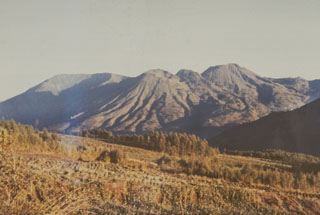Report on Dieng Volcanic Complex (Indonesia) — 28 July-3 August 2021
Smithsonian Institution / US Geological Survey
Weekly Volcanic Activity Report, 28 July-3 August 2021
Managing Editor: Sally Sennert.
Please cite this report as:
Global Volcanism Program, 2021. Report on Dieng Volcanic Complex (Indonesia) (Sennert, S, ed.). Weekly Volcanic Activity Report, 28 July-3 August 2021. Smithsonian Institution and US Geological Survey.
Dieng Volcanic Complex
Indonesia
7.2°S, 109.879°E; summit elev. 2565 m
All times are local (unless otherwise noted)
PVMBG reported that on 30 July a burst of mud originated from the Siglagah thermal feature (Dieng Volcanic Complex), located on a steep hill, about 1 km NE of the center of Pagerkandang cone. The event caused an audible banging noise and sent a mudflow, 1-3 m thick, 10 m N. Observers that had visited the site in July saw gas emissions rising 10-30 m high and occasionally heard “bursting” noises up to 100 m away. The event was not accompanied by an increase in seismicity; the Alert Level remained at 1 (on a scale of 1-4), and the public was warned to stay away from the thermal area.
Geological Summary. The Dieng plateau in the highlands of central Java is renowned both for the variety of its volcanic scenery and as a sacred area housing Java's oldest Hindu temples, dating back to the 9th century CE. The Dieng Volcanic Complex consists of multiple stratovolcanoes and more than 20 small Pleistocene-to-Holocene craters and cones over a 6 x 14 km area. Prahu stratovolcano was truncated by a large Pleistocene caldera, which was subsequently filled by a series of cones, lava domes, and craters, many containing lakes. Lava flows cover much of the plateau, but observed activity has been restricted to minor phreatic eruptions. Gas emissions are a hazard at several craters and have caused fatalities. There are abundant thermal features and high heat flow across the area.
Source: Pusat Vulkanologi dan Mitigasi Bencana Geologi (PVMBG, also known as CVGHM)

